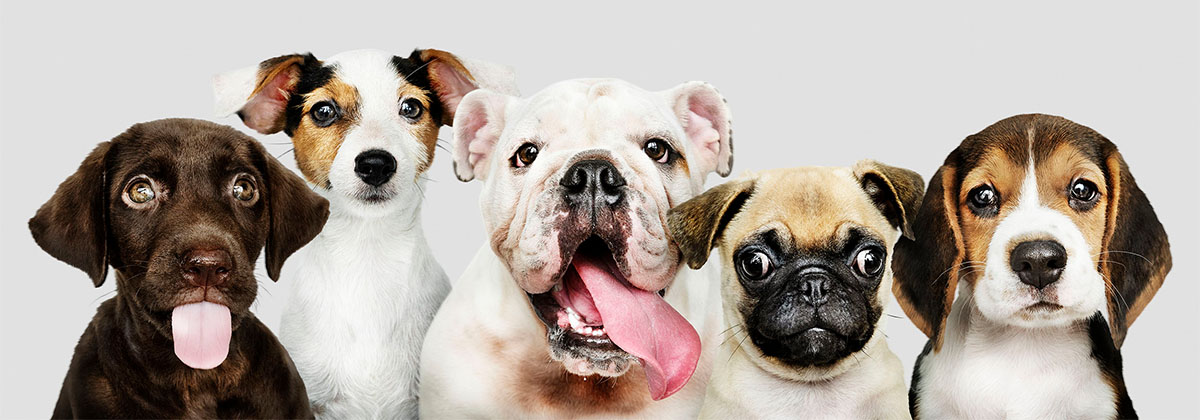20 Aug Common Skin Diseases in Dogs – Symptoms and Treatment (part 2)
There are many skin problems and diseases in dogs that can endanger their health. In the previous part, we said that healthy skin should be pink or black, depending on the breed pigment and the dog’s appearance. Their coat should be free of any scars, scaling, inflammation and skin problems. The symptoms of skin diseases varied. Some of them are normal in breeds, and some are seasonal allergies. If these symptoms persist and are diagnosed by a veterinarian, you should seek treatment as soon as possible. Dog owners should brush and check their puppy’s coats regularly. In this case, they can prevent the spread of their disease quickly. One of these diseases is Impetigo or jaundice. We explained its diagnosis and treatment before. In this section, we will explain some other important skin diseases and how to treat them separately.
Other important skin diseases in dogs
Atopy or environmental allergies
Severe and sudden itching, especially on the face, chest and abdomen, can indicate that the dog has been exposed to environmental allergens and has ingested them mainly through inhalation. An ” atopy ” type of allergy is similar to the problem that causes seasonal allergies in humans! The difference is that in dogs, instead of sneezing and a runny nose, it shows itself as itchy skin, and the dog constantly licks and scratches himself.
Diagnosis
The most common environmental allergens are grass, dust, plant pollens and detergents, which a veterinarian can determine by performing a blood test.
Treatment
Treatment of environmental allergies is usually difficult and, in acute cases, can be treated with shampoo, tablets and injections. However, in recent years, new drugs have been introduced that increase the resistance of dogs to these cases and greatly reduce allergy symptoms.
Food allergies
Severe and increasing itching in the face, legs, ears and anus can be signs of a dog’s sensitivity to food. Dogs may be allergic to certain types of protein, such as beef, eggs, poultry, and dairy products. However, some foods such as wheat or even vegetables can cause allergic reactions in some dogs.
Treatment
Treating food allergies in dogs involves the complete elimination of the substance from the diet, which, according to the veterinarian, lasts between 8-12 weeks. During this period, you should avoid giving any food that is likely to cause allergies to treat allergic symptoms in dogs.
Folliculitis or inflammation of the hair follicles
Folliculitis means swelling and inflammation of the hair follicles. It often occurs in dogs that have other skin problems such as allergies or scabies. The disease manifests itself in the form of sores, inflammation and bumps on the skin.
Treatment
Your veterinarian will usually prescribe shampoo, oral antibiotics, and antibacterial ointments to relieve skin symptoms and infection.
Yeast skin infection in dogs
Warmer areas of the dog’s body, such as the ear canal, between the fingers, groin and genitals, can develop yeast infections. As a result of this infection, the skin thickens, and the dog constantly scratches or bites these areas. Yeast infection can even change the colour of the skin and cause a bad odour.
Treatment
The yeast infection treatment is usually done by prescribing a topical cream, washing with a special shampoo and tablets to reduce the annoying symptoms and eliminate the infection in the affected areas.
Dermatophytosis, alopecia areata or cutaneous fungus
Dermatophytosis is one of the most common skin diseases in dogs and humans and is caused by a fungus called dermatophyte. The fungal infection manifests itself in the form of round or coin baldness, scaling, and dandruff. The disease often affects the dog’s head, claws, ears and front legs. Due to severe scratching, the dog’s skin may become red and even inflamed, causing more skin problems and infections.
Treatment
The disease can be transmitted to humans as well as other animals such as cats. So take your dog to a veterinarian if you notice any signs of localized hair loss and rapid baldness. Your veterinarian can treat this condition with topical treatments such as shampoos and ointments, oral treatments or injections.




No Comments